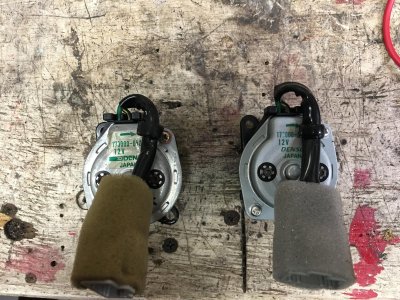It appears that the 2002-2005/6 CR-V has a [near] exact aspirator fan as the NSX.
If you run the basic DENSO 173000 part number on the back through a search engine you will find that other manufacturers (including Range Rover, Jaguar, Porsche) use a slighly different configuration unit that can be robbed for parts.
If you run the basic DENSO 173000 part number on the back through a search engine you will find that other manufacturers (including Range Rover, Jaguar, Porsche) use a slighly different configuration unit that can be robbed for parts.









